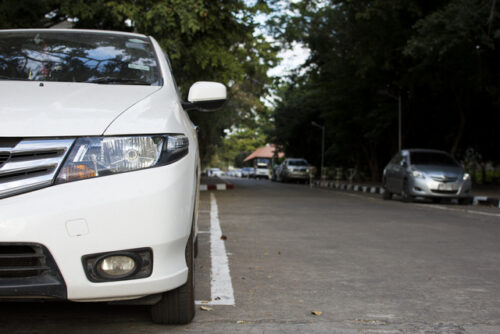 Over the years, we’ve noticed Toyota vehicles face some unique battery problems compared to other makes and models on local Fremont roads as well as surrounding cities like Menlo Park. That’s why we put together this comprehensive guide on the 7 most common reasons Toyota batteries fail and how Fremont Foreign Auto helps drivers get back on the road.
Over the years, we’ve noticed Toyota vehicles face some unique battery problems compared to other makes and models on local Fremont roads as well as surrounding cities like Menlo Park. That’s why we put together this comprehensive guide on the 7 most common reasons Toyota batteries fail and how Fremont Foreign Auto helps drivers get back on the road.
1. Parasitic Battery Drain
The unseen energy thief draining Toyota batteries overnight is known as “parasitic draw.” Modern Toyotas have sensors and computers that require a small amount of continuous power. But faults in wiring, switches, and even electronics can cause an abnormally high parasitic draw that silently drains the battery.
We often see this issue in newer Prius and RAV4 models in particular. Our expert technicians track down the source of parasitic drain using advanced tools like digital multimeters and current clamps. We inspect circuits, connections, and components to isolate the fault and make repairs. This allows us to stop the invisible battery drain so you can drive with confidence again.
2. Dead 12V Battery in Hybrids
Toyota’s groundbreaking Prius hybrid features both a large 204V hybrid battery and a smaller 12V battery to power accessories and electronics. It’s this smaller 12V battery that most often fails in hybrids, causing no-start conditions and warning lights.
Luckily, diagnosing and replacing dead 12V batteries in Toyota hybrids is relatively straightforward for our technicians. And given the affordable cost of a new 12V battery, it makes good economic sense for most Prius owners over the age of 5 years old. Either way, we’ll have your Toyota hybrid up and running again in no time.
3. Extreme Hot and Cold Temperature Impact
During seasonal shifts in weather, Toyota batteries work extra hard. In winter’s freezing temperatures, the chemical reactions inside the battery slow down, reducing cranking power. At the opposite end, summer heat accelerates internal corrosion and shortens battery life.
Here at Fremont Foreign Auto, we see the impact of extreme temperatures on batteries firsthand during Bay Area seasonal shifts. That’s why we recommend proactive battery system inspection before and after winter to help prevent issues. We also suggest Toyota owners invest in an AGM battery if living in areas with substantial temperature fluctuations during the year.
4. Gradual Loss of Capacity in Aging Batteries
Modern batteries are only designed to last 3-5 years before capacity fades. For those still driving older generation Toyotas in the Fremont area, an aging battery with reduced cranking amps is often the culprit.
Our expert techs at Fremont Foreign Auto use conductance testing to measure the actual capacity left in your Toyota’s aging battery. If it tests bad, we provide affordable Toyota battery replacement options to restore fast engine cranking and reliable starts. Investing $100-150 for a new battery every 5 years is recommended.
5. Parasitic Draw from Faulty Components
As discussed earlier, parasitic battery drain can sneakily kill Toyota batteries overnight. In some cases, we track the excessive drain down to faults in specific components like door locks/latches, dome lights, trunk switches, even aftermarket accessories.
With advanced diagnostic tools, our techs methodically track down parasitic draw in Toyota electrical systems to isolate and repair the specific faulty component causing battery drain. We also install fuses/switches during repairs to protect the new battery against future issues.
6. Data Communication Modules in Newer Models
Toyota’s newer models feature a Data Communication Module (DCM) to enable app connectivity, WiFi hotspots, over-the-air updates and more. But DCM faults can actually continuously try to connect devices, causing steady battery drain.
At Fremont Foreign Auto, we leverage official Toyota repair procedures to update DCM software, reconfigure settings, and confirm modules are sleeping when they should. Our goal is always maximum connectivity without compromising battery performance. We want you to enjoy the latest tech without getting stranded!
7. Faulty Alternators Unable to Recharge
A properly working alternator recharges the battery while you drive by supplying 13-14V. But with a failing alternator, your Toyota’s battery won’t fully recharge during operation. This inevitably leads to a dead battery and no-start.
When batteries are repeatedly dying, we test alternator output, diodes, connections and more during diagnosis. We’ll rebuild or replace your Toyota’s alternator as needed to ensure proper charging voltage is restored. This stops the cycle of battery drain so you can drive with confidence once again.
Trust Fremont Foreign Auto for Reliable Battery Repair
As you can see, there are a number of reasons Toyota batteries can unexpectedly die despite proper maintenance. The good news is the experts at Fremont Foreign Auto have the advanced diagnostic capabilities, Toyota-specific technical knowledge and high quality repair parts to accurately troubleshoot root causes and prevent repeat issues with your vehicle’s starting and charging system.

